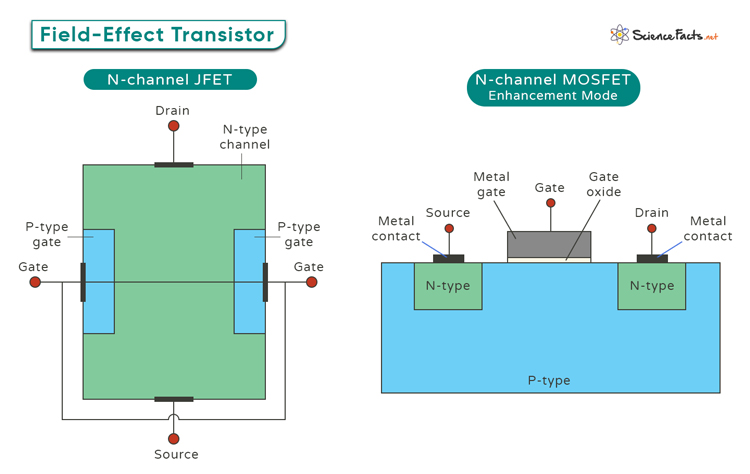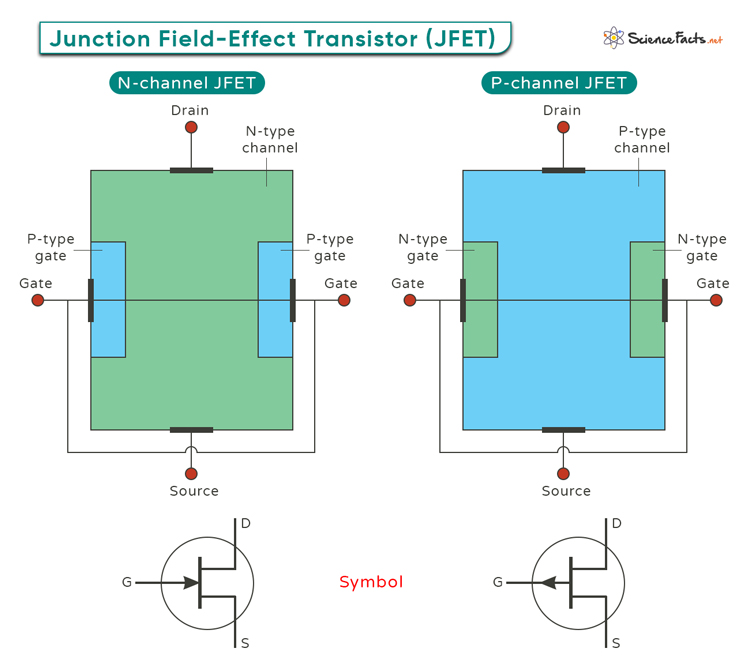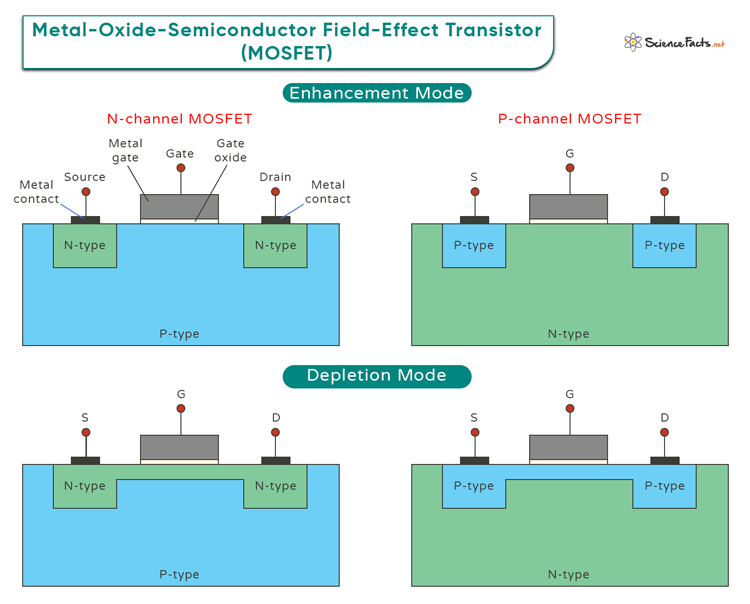How Does a FET Work
Types of FET
Advantages
BJT vs. FET
The key to the FET’s operation is the gate terminal, which is insulated from the channel by a thin layer of oxide. Applying a voltage to the gate creates an electric field that influences the channel’s conductivity. By varying this voltage, one can control the current, allowing for precise control within a circuit.
- JFET A JFET is characterized by a junction between the gate and the channel, offering simplicity and robustness. It comes in two forms: N-channel and P-channel.
N-channel JFET: The channel is formed by electrons. A positive gate-to-source voltage enhances the channel conductivity by attracting electrons to the channel region, allowing current to flow.P-channel JFET: The channel is formed by hole. A negative gate-to-source voltage enhances the channel conductivity by attracting holes.
- MOSFET A MOSFET features a metal gate insulated by a thin oxide layer from the semiconductor. It has two operating modes: enhancement mode and depletion mode.
Enhancement Mode: A voltage applied to the gate creates a conducting channel in the semiconductor, enabling current flow. Depletion Mode: The conducting channel exists by default, which diminishes as a voltage is applied to the gate.
These two modes give rise to four types of MOSFET.
N-channel Depletion MOSFETP-channel Depletion MOSFETN-channel Enhancement MOSFETP-channel Enhancement MOSFET
High Input Impedance: It helps reduce loading effects on preceding stages in a circuit, ensuring signal integrity and fidelity. This feature makes FETs suitable for applications where signal amplification and impedance matching are crucial. Low Power Consumption: Its ability to operate at lower power levels without compromising performance makes it highly desirable in modern electronic design, especially portable electronic devices.


